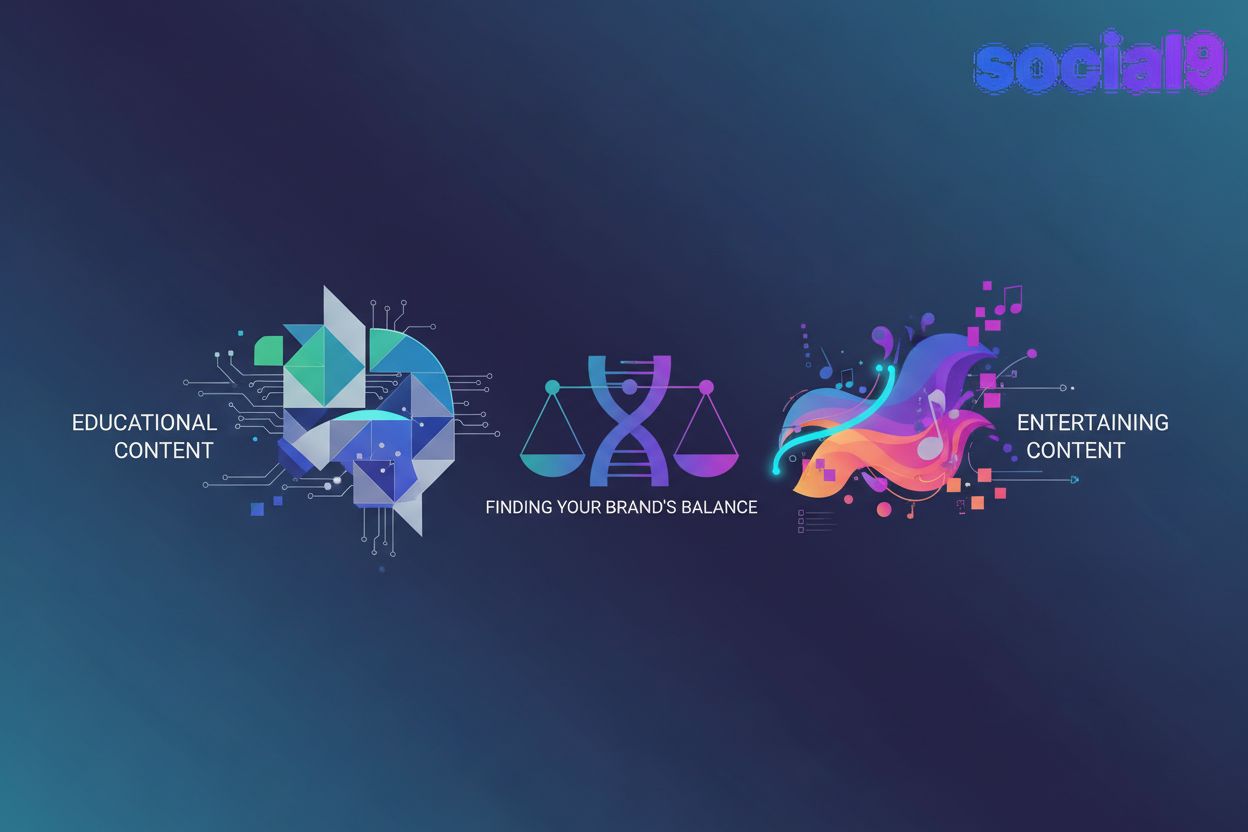Maintaining Brand Voice Consistency with AI: A Guide for Content Creators
Understanding Brand Voice and Its Importance
Did you know a consistent brand voice can increase revenue by 23%? (Brand Consistency Explained: What It Is, Why It Matters ...) It's not just about what you say, but how you say it. Let's dive into understanding brand voice and why it's crucial for content creators.
Brand voice is essentially the personality of your brand expressed through the language you use. Think of it as how your brand would speak if it were a person.
It encompasses the tone, style, and vocabulary you employ in all your communications. For example, a healthcare company might use a compassionate and reassuring tone, while a tech startup could opt for an innovative and enthusiastic style.
It should reflect your brand values and resonate with your target audience. A financial institution targeting young investors might use approachable and jargon-free language, whereas one catering to high-net-worth individuals may use more sophisticated terminology.
Maintaining a consistent brand voice is paramount for several reasons.
It builds brand recognition and trust. When your audience consistently hears the same voice, they begin to recognize and trust your brand. Consider a retail brand that always communicates in a friendly and helpful tone; customers will come to associate that feeling with the brand.
It creates a cohesive brand experience. A consistent voice ensures that customers perceive your brand as unified and reliable across all touchpoints.
It strengthens brand identity and differentiation, making your brand stand out in a crowded marketplace.
Ultimately, it improves customer loyalty and engagement.
Failing to maintain a consistent brand voice can have detrimental effects.
It can lead to confusion and a diluted brand identity. If your messaging is all over the place, customers won't know what your brand stands for.
It can cause an erosion of trust and credibility. Inconsistent messaging can make your brand appear unreliable or even untrustworthy.
It can lead to weakened customer relationships. Customers are less likely to connect with a brand that doesn't have a clear and consistent identity.
All of which can have a negative impact on marketing effectiveness.
Now that we understand the importance of brand voice, let's explore how ai can help maintain that consistency.
The Role of AI in Content Creation and Brand Voice
Did you know that ai-driven content creation is projected to grow exponentially, reaching a market size of $39.7 billion by 2030? (AI in Content Creation: Market Growth and Adoption Trends | PatentPC) It's clear that ai is rapidly changing how content is created and managed, and its role in maintaining brand voice is becoming increasingly important.
Ai-powered content generation tools are revolutionizing the way businesses create content. These tools offer a range of capabilities, from generating text to creating images and videos, and can significantly streamline the content creation process.
- Text Generation: Ai writing assistants can help generate blog posts, articles, social media updates, and even website copy. These tools use natural language processing (NLP) to understand the context and generate content that aligns with the desired tone and style. For instance, an e-commerce company could use ai to automatically generate product descriptions, saving time and ensuring consistency.
- Image Generation: Ai image generators can create unique visuals based on text prompts. A retail brand could use these tools to create eye-catching social media graphics or website banners.
- Video Editing: Ai-powered video editors can automate tasks such as trimming footage, adding captions, and creating highlight reels. This is particularly useful for brands that rely heavily on video content, such as those in the travel or entertainment industries.
These tools automate content creation, freeing up human creators to focus on strategy and creative direction.
Ai can play a crucial role in ensuring brand voice consistency across all content formats and platforms. By analyzing existing content and identifying key characteristics of the brand voice, ai can help maintain that voice as content creation scales.
- Ensuring Consistency: Ai can analyze all content to ensure it aligns with brand voice guidelines. For example, a healthcare organization can use ai to ensure that all patient-facing materials use a compassionate and reassuring tone, regardless of the content format.
- Adapting to Different Platforms: While maintaining a consistent brand voice is important, it's also necessary to adapt to different platforms. Ai can help tailor content to suit the specific nuances of each platform, ensuring that the message resonates with the target audience while still staying true to the brand's core values. A financial services company, for example, might use ai to adapt its content for LinkedIn versus TikTok, maintaining a professional tone on the former and a more informal tone on the latter.
- Scaling Content Creation: As content demands increase, maintaining brand voice consistency can become challenging. Ai can help scale content creation efforts without sacrificing quality or consistency. A large retail brand, for instance, could use ai to generate personalized marketing emails for millions of customers, all while maintaining a consistent brand voice.
Ai-driven tools empower content creators to maintain brand voice, but human oversight remains essential. As content creation scales, ai can help ensure that brand voice remains consistent and authentic.
Next, we'll delve into how you can define your brand voice for ai.
Practical Strategies for Achieving Brand Voice Consistency with AI
Did you know that brands with consistent messaging are 3 to 4 times more likely to experience brand visibility? (Why brand consistency drives growth) Let's explore practical strategies you can implement to maintain brand voice consistency with ai.
The first step in achieving brand voice consistency with ai is to clearly define your brand voice guidelines. This involves documenting your brand's tone, style, and vocabulary.
- Documenting your brand's tone, style, and vocabulary ensures everyone is on the same page. For instance, a luxury fashion brand might define its tone as sophisticated and elegant, its style as concise and descriptive, and its vocabulary as refined and evocative.
- Creating a style guide for content creators is essential. This guide should include specific examples of what to do and what not to do. For example, a tech company's style guide might specify the use of jargon-free language and a focus on innovation and user benefits.
- Examples of brand voice attributes could include being friendly, professional, humorous, or authoritative. A non-profit organization might aim for a compassionate and empathetic tone, while a legal firm would likely prefer a formal and professional voice.
Once you've defined your brand voice, the next step is to train ai models to emulate it. This involves feeding ai tools with examples of your brand's existing content.
- Feeding ai tools with examples of your brand's content helps them understand the nuances of your brand voice. A consumer goods company could provide ai with a collection of blog posts, social media updates, and marketing materials to learn the brand's unique style.
- Customizing ai models to match your specific voice is crucial for accuracy. For example, a financial institution might fine-tune an ai model to ensure it uses precise and compliant language in all communications.
- Iterative refinement of ai outputs for accuracy is an ongoing process. Regularly reviewing and adjusting the ai's output ensures it stays true to your brand voice as it evolves.
Ai isn't just for content creation; it's also a powerful tool for content review and editing. Imagine ai as your always-on brand voice guardian.
- Using ai to identify inconsistencies in tone and style ensures that all content aligns with your brand guidelines. A global corporation, for example, can use ai to scan all its marketing materials for deviations from the established brand voice.
- Automating the editing process for brand voice compliance saves time and resources. A small business can use ai to quickly review and edit social media posts, ensuring they are consistent with the brand's overall tone.
- Ensuring all content aligns with brand guidelines helps maintain a cohesive brand identity. Whether it's a blog post, a social media update, or a marketing email, ai can help ensure that every piece of content reflects your brand's unique voice.
By defining your brand voice guidelines, training ai models, and leveraging ai for content review, you can ensure that your brand voice remains consistent across all channels.
Next, we'll explore how to choose the right ai tools for your content creation needs.
Tools and Technologies for AI-Powered Brand Voice Management
Ready to supercharge your brand voice management? Let's explore some of the ai-powered tools and technologies that can help you maintain consistency and elevate your content.
Ai writing assistants are becoming indispensable tools for content creators. Platforms like Grammarly, Jasper, and Copy.ai offer features that go beyond basic grammar and spelling checks. They can also detect and correct brand voice inconsistencies, ensuring that your content aligns with your established style guidelines.
- Grammarly offers a tone detection feature that helps users understand how their writing will be perceived. For instance, if your brand voice is meant to be formal and professional, Grammarly can flag instances where your writing leans towards a more casual tone.
- Jasper is another powerful ai writing assistant that can generate content in a specific brand voice Jasper - An ai writing tool that helps users create various types of content, including blog posts, social media updates, and marketing copy. By training Jasper on examples of your existing content, you can ensure that it consistently produces copy that matches your brand's unique style.
- Copy.ai is designed to help automate content creation while adhering to brand guidelines Copy.ai - A platform that uses ai to generate marketing copy, product descriptions, and other content. These tools often integrate seamlessly with social media platforms and content management systems, making it easier to maintain brand voice consistency across all your channels.
Social media management platforms are evolving beyond simple scheduling tools. Platforms like Hootsuite, Buffer, and Sprout Social now incorporate ai-powered features to help with content planning, scheduling, and optimization.
- Hootsuite offers ai-driven content suggestions and analytics to help you optimize your social media strategy Hootsuite - A social media management platform that allows users to schedule posts, monitor social media activity, and analyze performance. For example, its "Compose with AI" feature can assist in crafting posts that align with your brand voice and resonate with your target audience.
- Buffer provides ai-powered insights to help you understand which content performs best with your audience Buffer - A social media management tool that helps users schedule and publish content across various social media platforms. These insights can inform your brand voice strategy, helping you refine your messaging to maximize engagement.
- Sprout Social includes ai-driven tools for analyzing brand voice performance and engagement Sprout Social - A social media management platform that offers tools for social listening, content scheduling, and analytics. These platforms can help you track how your brand voice is resonating with your audience, allowing you to make data-driven adjustments to your content strategy.
These platforms provide valuable analytics on brand voice performance, enabling data-driven adjustments to your content strategy.
With these tools, maintaining a consistent brand voice becomes more manageable and scalable. Next, we'll discuss strategies for integrating ai into your content workflows.
Measuring the Impact of Brand Voice Consistency
Can you imagine knowing exactly how well your brand voice resonates with your audience? Measuring the impact of brand voice consistency is crucial for understanding its true value. Let's explore how to track its performance and analyze its return on investment.
To effectively measure brand voice performance, focus on metrics that reflect audience engagement and brand perception.
- Engagement rate (likes, shares, comments). A higher engagement rate indicates that your brand voice resonates with your audience. For instance, a retail brand using a humorous and relatable voice might see a surge in social media interactions.
- Brand mentions and sentiment analysis. Monitoring brand mentions helps gauge how your brand is perceived. Positive sentiment, where people speak favorably about your brand, suggests your voice is well-received. Sentiment analysis tools can help automate this process and categorize mentions as positive, negative, or neutral.
- Website traffic and conversions. Consistent brand voice can drive traffic and boost conversions. A financial services company with a trustworthy and knowledgeable voice may see increased sign-ups for their services.
- Customer satisfaction and loyalty. Loyal customers are more likely to stick with a brand whose voice aligns with their values. Tracking customer satisfaction scores and repeat purchase rates can indicate the effectiveness of your brand voice.
Understanding the return on investment (ROI) of a consistent brand voice involves connecting it to tangible business outcomes.
- Connecting brand voice to business outcomes. Demonstrating how a consistent brand voice translates into increased sales, customer retention, or brand equity is key. For example, a healthcare provider using a compassionate voice might see improved patient satisfaction scores, leading to better word-of-mouth referrals.
- Measuring the impact on brand awareness and perception. Consistent messaging builds brand recognition. Track metrics like social media reach, website visits, and brand recall surveys to assess the impact of your brand voice on awareness and perception. A consumer goods company with a playful and innovative voice might see a significant increase in brand awareness among its target demographic.
- Demonstrating the value of ai-powered brand voice management. Showcasing how ai tools enhance consistency and efficiency can justify the investment in these technologies. Highlight improvements in content quality, time savings, and overall brand performance. For instance, an e-commerce business using ai to maintain a consistent voice across thousands of product descriptions might see a reduction in customer confusion and an increase in sales.
By tracking these metrics and connecting them to business outcomes, you can quantify the value of maintaining a consistent brand voice, especially with the help of ai-powered tools.
Next, we'll discuss how to seamlessly integrate ai into your existing content workflows.
Best Practices and Tips for Content Creators
Ready to take your content creation to the next level? Here are some best practices and tips to help content creators like you maintain brand voice consistency with ai.
First, define your brand's personality traits. Is your brand playful, serious, or authoritative? A clear understanding of these traits will guide your content creation process.
Next, create a list of "do's and don'ts" for language. For example, a luxury brand might "do" elegant and sophisticated language but "don't" use slang or colloquialisms.
Finally, include examples of content that embodies the brand voice. These examples will serve as a reference point for ai tools and content creators alike.
Adapt to changing trends and audience preferences. What resonates today might not resonate tomorrow. Stay flexible and willing to evolve.
Incorporate feedback from content creators and stakeholders. They are on the front lines and can provide valuable insights.
Ensure guidelines remain relevant and effective. Regularly audit your guidelines to ensure they continue to align with your brand's goals.
Social9's AI-Powered Generation helps you create engaging social media content quickly and easily.
Smart Captions feature generates compelling captions that capture your brand's voice and resonate with your audience.
Hashtag Suggestions identify relevant hashtags to increase your reach and visibility.
Content Templates provide a starting point for creating consistent and high-quality content.
24/7 Support ensures you always have assistance when you need it. Start creating engaging social media content with ai-powered tools from Social9. Generate posts, captions, and hashtags that drive engagement.
By following these best practices, you can ensure your brand voice remains consistent and impactful. Next, we'll discuss the future of brand voice consistency with ai.
The Future of Brand Voice Consistency with AI
The journey to brand voice consistency doesn't end here; it evolves. What can content creators expect as ai technology continues to advance?
Improved natural language processing (NLP) and generation will allow ai to understand and replicate nuanced brand voices with greater accuracy. Imagine ai tools that can adapt to subtle shifts in tone based on real-time audience feedback.
More sophisticated ai models for brand voice customization will enable brands to create highly personalized content at scale. This means ai could generate content that resonates with individual customer segments, maintaining brand consistency while tailoring the message.
Integration of ai with emerging platforms and technologies will streamline content creation across diverse channels. For example, ai could seamlessly adapt brand voice for metaverse experiences or interactive voice assistants.
Focus on strategic content planning and creative direction will become paramount. Content creators will shift from execution to strategy, guiding ai to align with overall brand objectives.
Collaboration with ai tools to enhance content quality and efficiency will be the new norm. Ai will handle repetitive tasks, freeing up creators to focus on high-impact, innovative content.
Emphasis on human creativity and emotional intelligence will differentiate successful brands. While ai can replicate voice, human creators will bring the empathy and creativity needed to build genuine connections.
Maintaining brand voice consistency with ai is an ongoing journey. By embracing these advancements and adapting their roles, content creators can unlock new levels of efficiency and impact.





